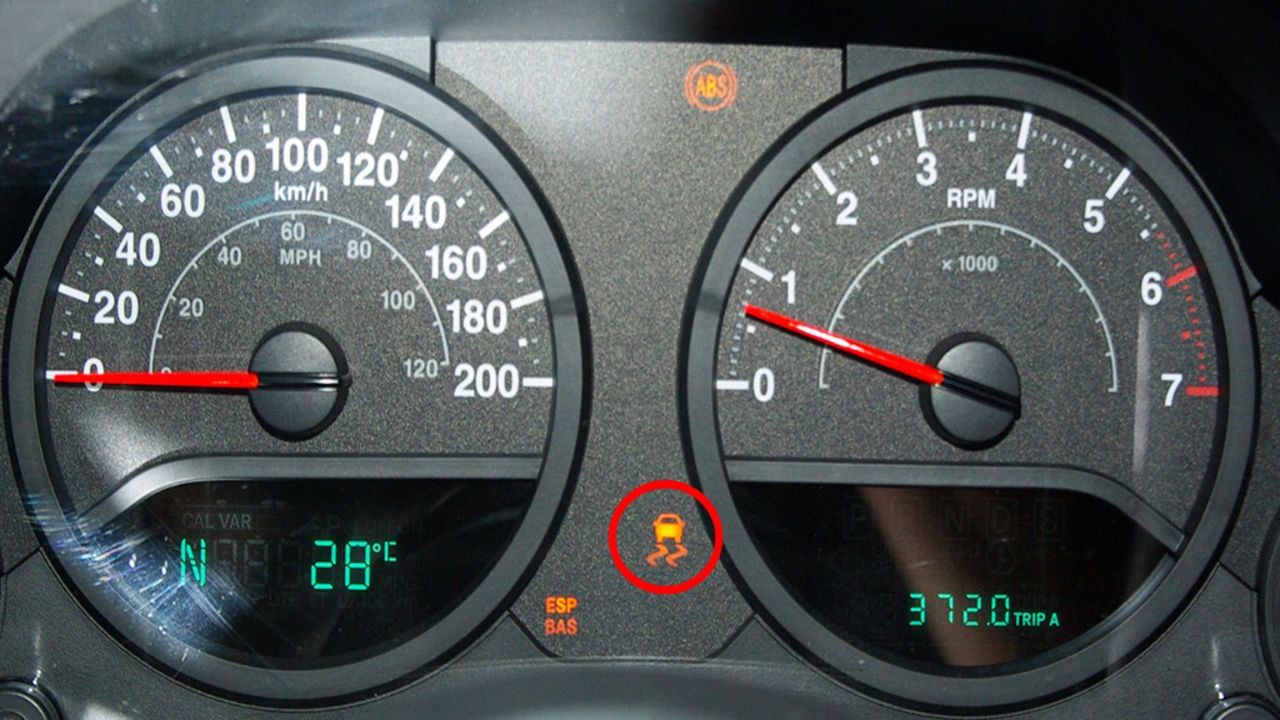Modern cars are generally equipped with some variation of an electronic stability control system. Numerous road accidents on the highways have decreased thanks to the ESP system. However, when there’s an issue with this system the ESP light will come on.
The ESC or ESP system works in conjunction with others, such as the traction control system and anti-lock brakes. The ESP is a crucial system because it ensures stable driving in all directions and lateral dynamics.
In difficult driving situations, this prevents you from skidding and ensures that your steering is as accurate as possible.
When you steer erratically, the ESP also tells your engine to cut down on power, which has an impact on how much power is sent to each wheel. Unfortunately, when driving in bad weather, the failure of this system can be quite dangerous and result in serious accidents.

What is the electronic stability program (ESP) system?
A safety device in cars called the Electronic Stability Programme (ESP) increases stability by sensing and minimizing traction loss. In order to help balance the car, the ESP immediately applies the brakes when it detects an error in the steering control.
The electronic stability program (ESP) provides the driver additional support in almost all dangerous driving conditions. It can do a lot more than just perform the antilock braking system’s (ABS) and traction control system’s functions.
It actively prevents vehicle skidding by detecting certain movements. Depending on the danger, brakes are automatically delivered to different wheels; for instance, braking is given to the inner front wheel to battle understeer and to the outer wheel to counter oversteer.
Wheel speed sensors, a hydraulic control unit, a steering angle sensor, and an ESP warning light on your car’s dashboard are just a few of the parts that make up the ESP system. Your car uses the ESP warning light to let you know when the stability control system is malfunctioning.
What does the “electronic stability program” light mean?
When the Electronic Stability Program (ESP) light comes on, it usually means that there is an issue with the ESP system or that you’re driving on a slippery surface.
The light will illuminate to show that it is functioning when you’re driving on a slick surface, like a wet road. In this situation, the light usually flashes.
However, your electronic stability system is malfunctioning if you are driving on a normal surface and the ESP light remains on. When your vehicle loses traction when you are driving over a slippery surface, the electronic stability program warning light will come on.
In most cases, the ESP light will flash while the system is active and turn off after traction is regained and your vehicle returns to normal. While driving over a normal surface, the light staying on, however, can point to a number of other issues.
What causes the car’s ESP light to come on?
Here are most of the things that cause the ESP warning light to come on:
- Faulty ABS Speed Sensor
- Issues with the ABS wiring
- Defective ABS rings
- Faulty throttle body
- steering angle sensor problems
- Brake pedal switch malfunction
#1. Faulty ABS Speed Sensor.
The ABS control unit receives data regarding each wheel’s speed from the wheel sensors. When one or more wheels begin to slip, the ABS control unit measures this data and makes the necessary adjustments.
If one ABS sensor malfunctions, it may believe that one wheel is slipping while it actually isn’t, which will turn on the light.
#2. Issues with the ABS wiring.
Additionally, each wheel sensor is controlled by wires coming from the ABS unit. However, because of the suspension, these wires move a lot, which over time may cause wear and tear.
#3. Defective ABS rings.
The ABS ring provides the ABS sensor with wheel speed data. These rings’ malfunction or breakage may result in the sensor reading the incorrect speed.
#4. Faulty throttle body.
When your vehicle slips, the ESP system’s power output is managed by the throttle body. The ESP light will illuminate if there is a problem with the throttle body.
#5. Steering angle sensor problems.
The steering angle is another factor that the ESP system considers when determining what to do when slipping occurs. The ESP light may come on if your steering angle sensor is degrading or if it’s not correctly programmed.
#6. The brake pedal switch malfunction.
When you depress the brake, the ESP system needs to be informed, and the brake pedal has a switch that makes sure this function operates as intended. However, a malfunction with the switch might result in the transmission of incorrect information, which would turn on the ESP light.
What can you do when your car’s ESP light comes on?
First, make sure you didn’t accidentally press the ESP switch, which turns the function on and off. If you can simply turn the function back on, you can avoid making an unnecessary trip to the garage.
Using an OBD2 scanner, you can check for trouble codes if the ESP light is on in order to determine what’s causing it. Either use an OBD2 scanner at home to check the trouble codes or do it at a repair shop.